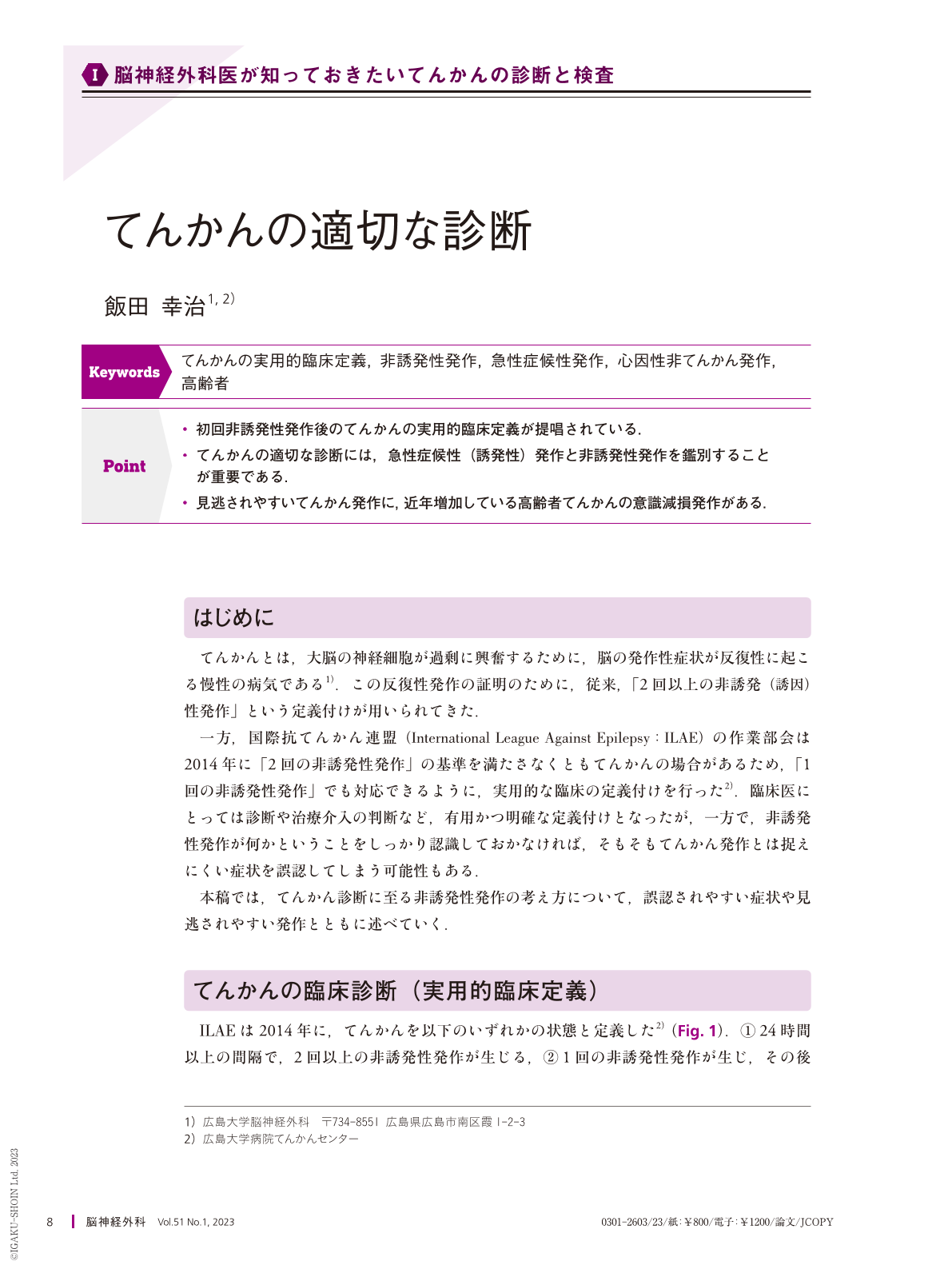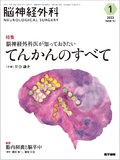Japanese
English
- 有料閲覧
- Abstract 文献概要
- 1ページ目 Look Inside
- 参考文献 Reference
Point
・初回非誘発性発作後のてんかんの実用的臨床定義が提唱されている.
・てんかんの適切な診断には,急性症候性(誘発性)発作と非誘発性発作を鑑別することが重要である.
・見逃されやすいてんかん発作に,近年増加している高齢者てんかんの意識減損発作がある.
Recently, a practical clinical definition has been proposed by the International League Against Epilepsy(ILAE). Management of an unprovoked first seizure in adults has also been reported with risk factors of recurrence relevant to epilepsy diagnosis by the American Academy of Neurology. The term“unprovoked”implies the absence of a temporary or reversible factor lowering the threshold and producing a seizure at that point in time. A seizure immediately after a stroke or head injury would exemplify a provoked seizure, as called acute symptomatic(or early)seizure, that would not lead to a diagnosis of epilepsy. The underlying mechanisms that cause the early seizure are considered to be different from those of epileptogenesis associated with recurrent epileptic seizures. Psychogenic non-epileptic seizure(PNES)or syncope resembles epileptic seizures and are often misdiagnosed. Some clinical features can help distinguish PNES or syncope from epileptic seizure. Clinicians should be familiarized with seizure semiology presumable to epilepsy. The incidence of epilepsy increases steadily after 50 years of age. As in younger people, the diagnosis of epilepsy is a clinical decision; however, in older people this can be more challenging. Many disorders, common in older people may confuse epilepsy seizures which should be differentiated by appropriate investigations.

Copyright © 2023, Igaku-Shoin Ltd. All rights reserved.


